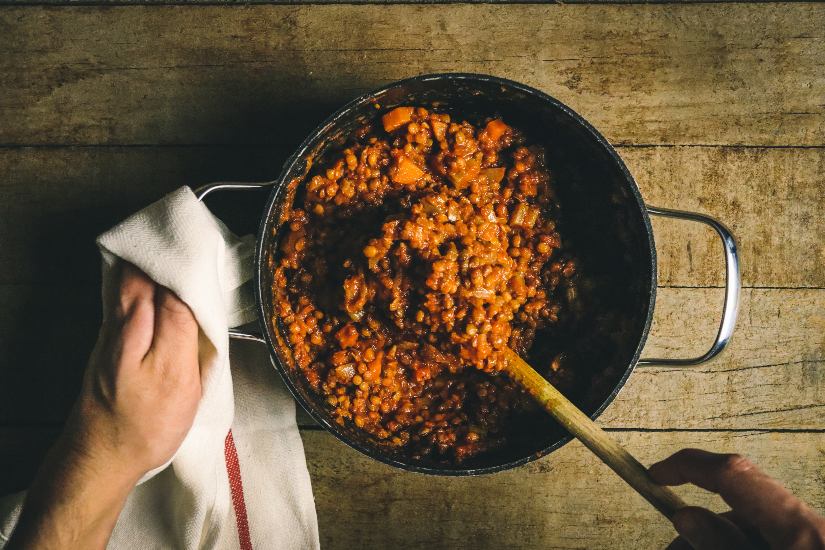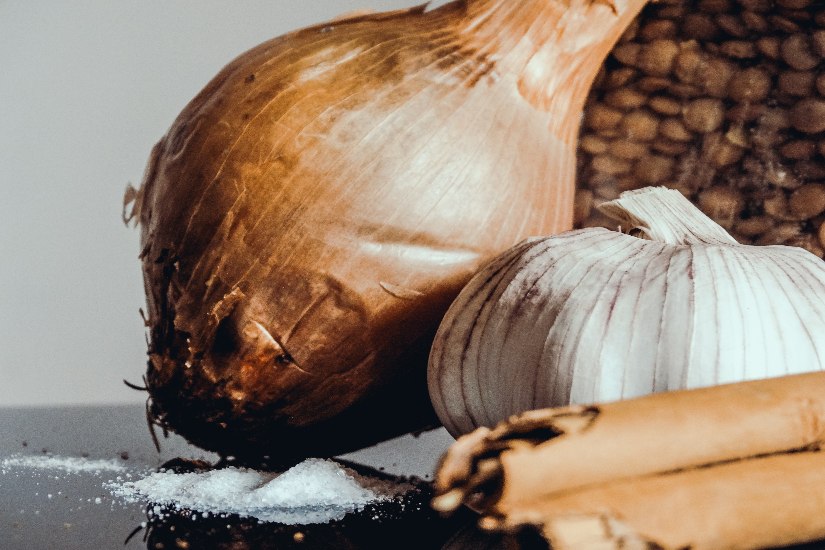With the arrival of rains and the lowering of temperatures during these months, you will certainly feel like trying some Spanish winter dishes such as the Madrid style stew, Asturian bean stew or «garlic soups».
Spanish winter dishes: Why do people eat “spoon dishes” during winter?
«Spoon dishes» is a Spanish expression used to describe those recipes, usually traditional and filling, that are eaten with this cutlery and served in a deep bowl.
Some examples of spoon dishes are soups, stews, casseroles and, in short, dishes that are served in broth or sauce.
But why are they more common in winter?
Outside temperatures influence our appetite and, above all, the foods we choose and how we eat them.
That is why, in the colder months, we opt for dishes that are eaten hot and are higher in carbs or fat.
If you visit us during these months, you should try the Spanish winter “spoon” dishes typical of each region.
With these dishes, you will be able to warm up and at the same time discover some of the best secrets of our country’s gastronomy.
You may also be interested in knowing the typical Spanish foods you should try.
Top Spanish winter dishes
We have selected some recipes so you can get to know the Spanish winter dishes «spoon by spoon». Which ones are you most excited about?
Cocido
Cocido is one of the most popular Spanish winter dishes.
It consists of a stew in which the main ingredient is chickpeas, served with a broth made with vegetables, meat, bacon and sausages.
From humble origins and linked to rural areas, cocido (also called “puchero”) is prepared almost everywhere in Spain, and has different versions in each region.
The most popular is the cocido madrileño, which is served in three courses: first the soup, then the chickpeas and vegetables, and finally the meat.
A very similar version is the “cocido maragato” which is typical in the province of León, while in Cantabria it is called cocido montañés, made with beans, cabbage and pork.
The Valencian cocido has the peculiarity of including «pilotas», meatballs made with minced and seasoned meat, and blanquet, a typical sausage of the region.
Lentils
A popular expression says “When there are lentils to eat, if you want to eat them, do it, if not, leave them”.
And the fact is that not everyone likes lentils, despite being one of the most popular winter recipes in Spain.
They are also a dish highly valued by nutritionists for its excellent nutritional value, with an abundant amount of iron and carbohydrates, they are recommended in the diet of both children and adults.
There are many ways of preparing lentils, depending on the preferences of the people eating them: with vegetables, with chorizo sausage, with potatoes, stewed with meat, with rice, …

Fabada (Bean stew)
Fabada is a typical dish from the north of Spain specifically from Asturias, a region of mountains with cold and humid winters.
It is believed that the origin of this dish dates back to the 16th century and is linked to the cultivation of fabes, a type of legume similar to beans, but larger and more buttery.
The other ingredients of the fabada asturiana, prepared and served in a clay pot, are bacon, ham bone, chorizo and morcilla (blood sausage).
Some recipes similar to fabada that we can eat in other Spanish regions are the “Alubias de Tolosa”, the “judiones de la Granja de San Ildefonso” (Segovia), the “arròs amb fesols i naps” from Valencia or the “seques amb botifarra”, in Catalonia.
Discover the festivities in Spain that you can’t miss.
Rioja-style potatoes
Rioja-style potatoes are a Spanish winter dish that can be found throughout the whole country, although it is more common in inland areas (La Rioja, Castilla La Mancha and Castilla y León).
This simple dish, but full of flavor, has its origins in the grape harvest, as it was common to eat it hot when returning home after a long day of work in the fields.
It was also usual to let it rest from one day to the next, to enhance its flavor.
Its ingredients are potatoes, chorizo, chorizo peppers and paprika, a spice that emphasizes its characteristic reddish color.
Garlic soups or “sopa castellana” (Castilian soup)
One of the Spanish winter dishes with the longest history are garlic soups.
In the coldest and toughest winters, they were eaten as breakfast, along with a cup of coffee and a few eggs cooked with their own broth, served very hot.
Today, this dish is still popular, especially to use leftover bread that has become stale.
It is quite simple to prepare: in a skillet pan, fry pieces of stale bread with garlic and paprika, and add meat broth.
Depending on the region, garlic soups (also called “sopa castellana”) are made with other typical winter ingredients, such as mushrooms (in Soria) or codfish (in the Basque Country).

Baked rice
Baked rice can be eaten all year round, but is especially popular in winter, as it is a filling and slow-digesting dish.
The recipe is an example of “trash cooking”, since it is prepared with the leftovers of the “cocido” (stew).
Its ingredients are pork products such as morcilla (blood sausage), chorizo or ribs, as well as fresh tomato and potatoes.
It is cooked and served in a clay pot, and is very popular throughout the Valencian Community, especially in villages in the interior of the province of Valencia, such as Xátiva.
Atascaburras
We end this overview of the most popular Spanish winter dishes with “atascaburras”, a dish from La Mancha with a very curious background.
According to the story, two farmers were stranded by a snowfall and decided to combine everything they had to eat (potatoes and codfish bones), mix it up and add olive oil to it.
Over time, other ingredients were added to the recipe, such as garlic, hard-boiled eggs or dried fruits (such as walnuts) to garnish.
This dish is very consistent and ideal to fight against low temperatures.
It is very similar to other recipes from Castilla La Mancha, specifically from the province of Cuenca, such as morteruelo (which is made with wild meat) or ajoarriero (which is prepared with codfish and potatoes).
Learn how to cook Spanish winter dishes
If you are interested in learning more about the gastronomy of our country and also have the chance to learn our language, at Españolé we offer Spanish courses in Spain.
In our Spanish school in Valencia, Spain you will not only learn our language, but you will also meet new people, share experiences with them, discover the habits and traditions of Spain and even go on trips in the surroundings of Valencia.
We are looking forward to seeing you!
